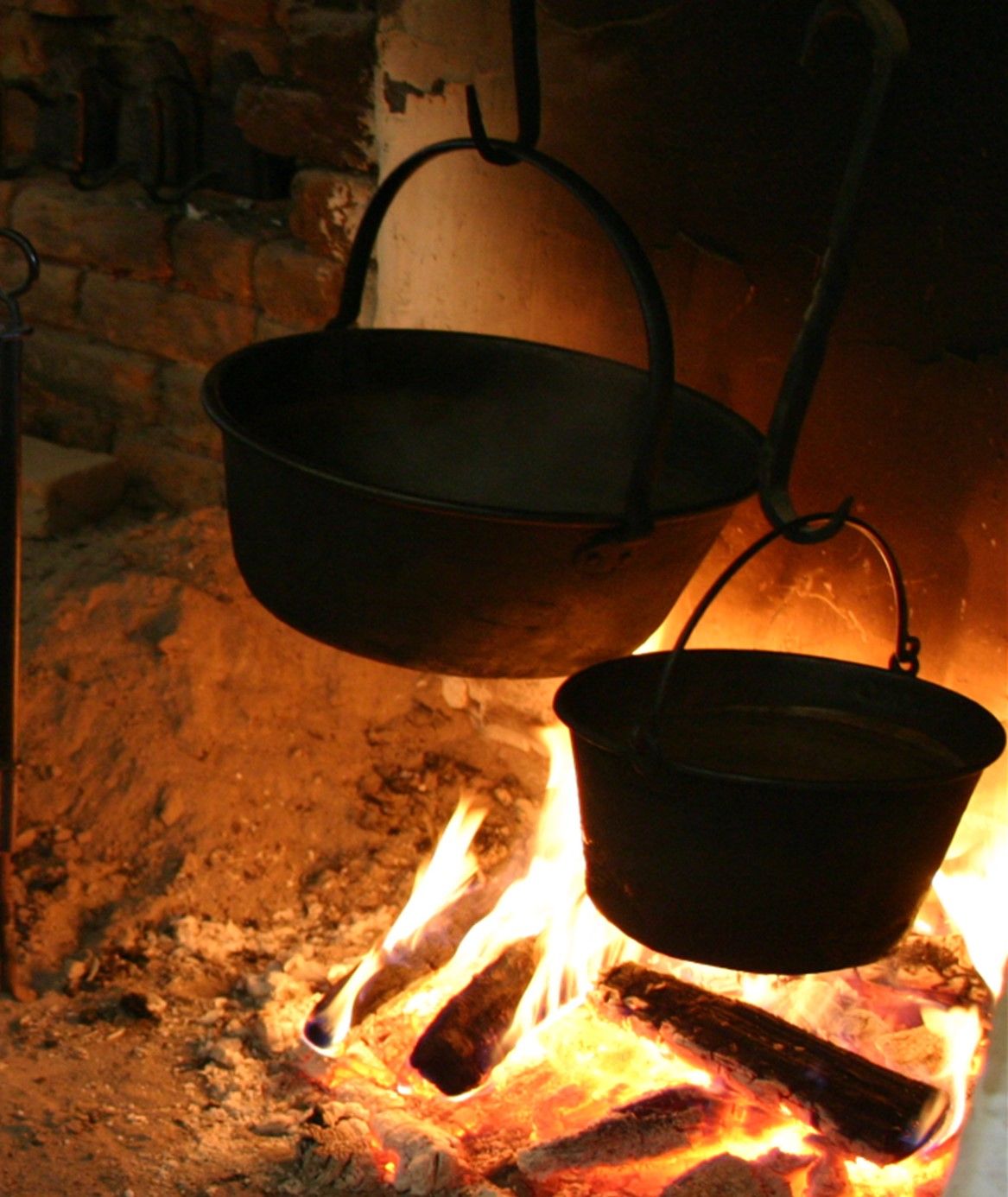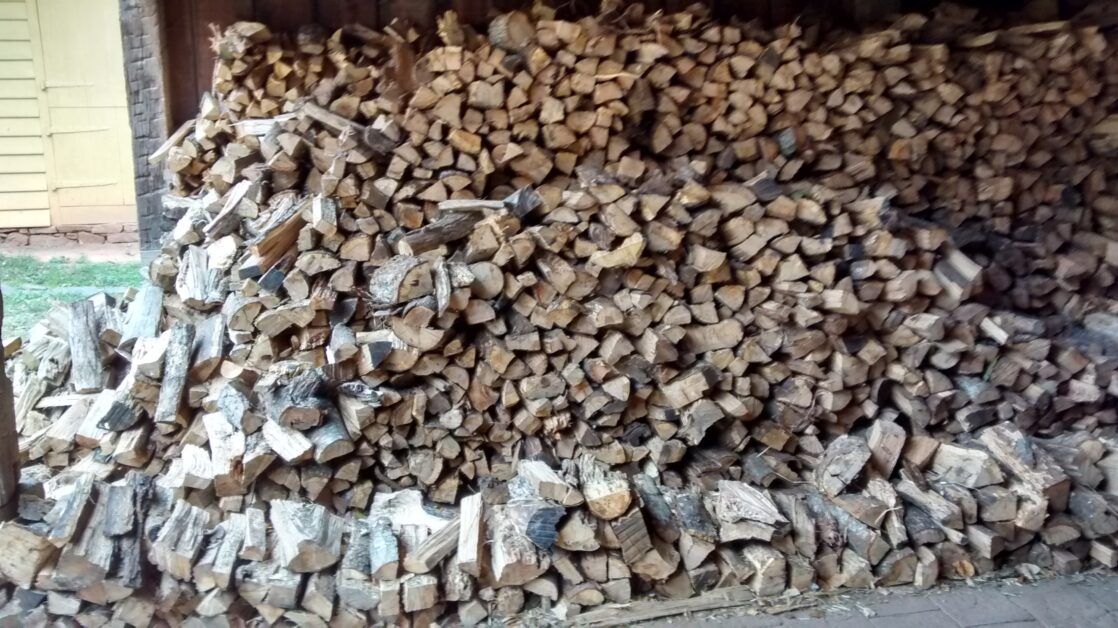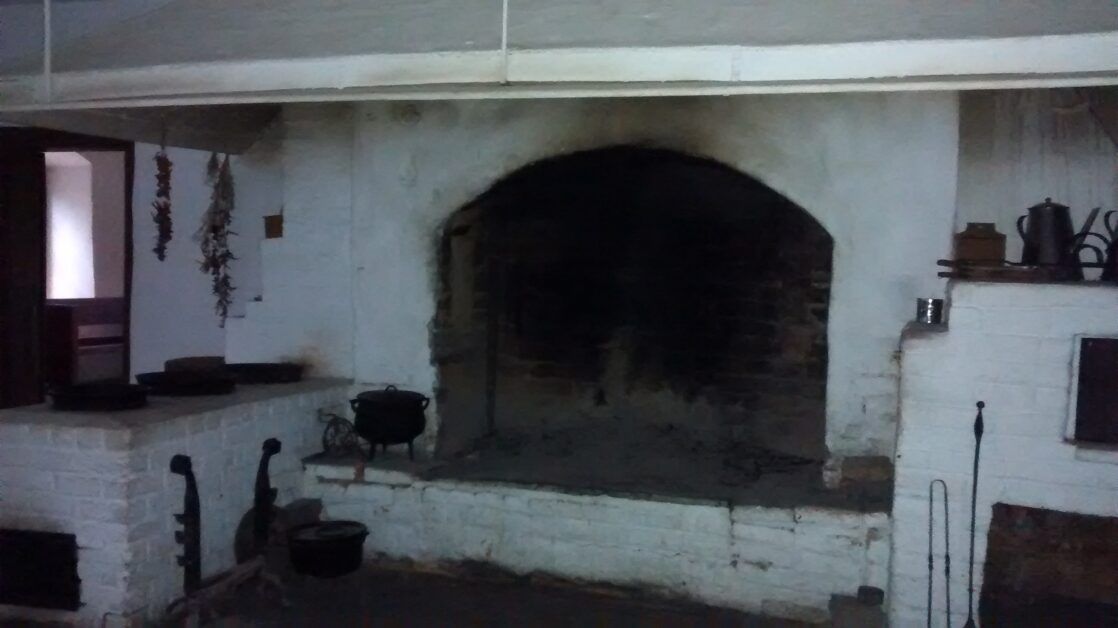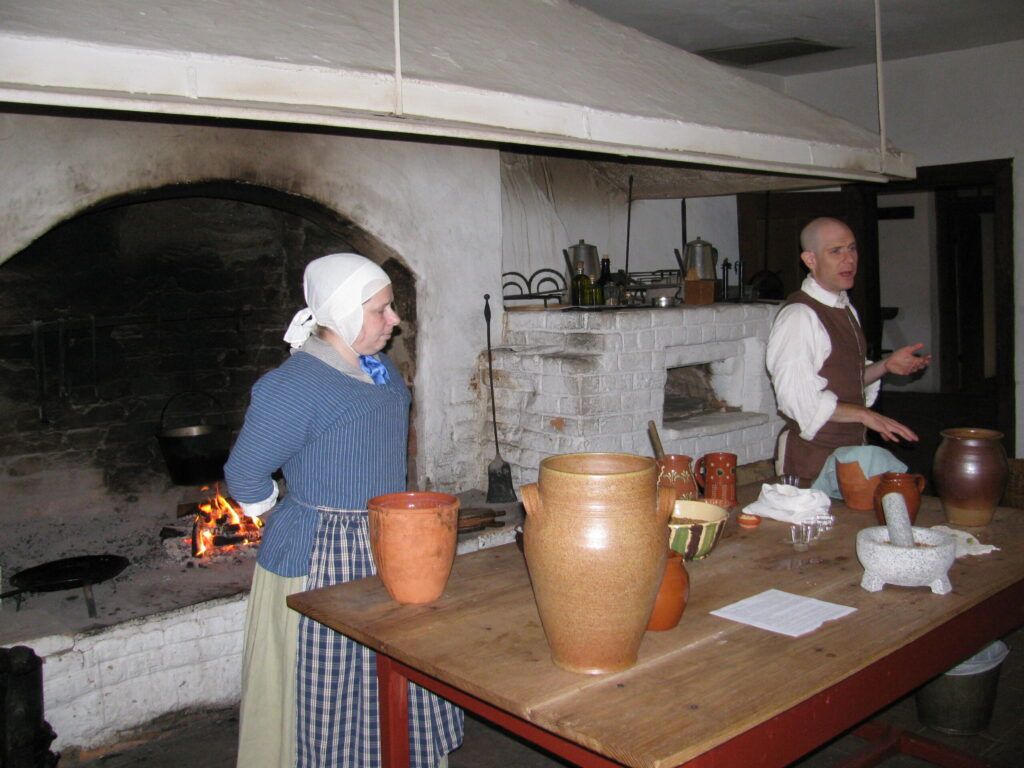So, I have been intending to write about my experience cooking on an 18th century hearth with an open fire, and what better time to start that set of postings than during the beginning of the hot season in NC! To give a little background on my experience with hearth cooking, I am not a camper or a girl scout type of open fire cook. Personally, I like my gas stove, refrigerator, and running water when I am cooking for personal enjoyment. My open hearth experience is all due to my work in living history, where I got paid to work over an open hearth in July and August. It also means that I have cooked full, three course meals on a hearth, and served them to staff during working hours. This experience means that I am not going to talk about all the nifty camping equipment you can buy to cook with. Instead, I am going to give you an idea of how hearth cooking was done when it was the only option, and what middle class people did with average kitchens, not what the wealthy had available to them (I have never cooked in a kitchen like at Monticello, for instance). In this first post, I’ll give some of the starting points, and then next week I’ll continue with some specifics about summer cooking short-cuts.
The first thing to know about hearth cooking is that it is all about the wood. I have done a lot of research about supplying and purchasing for kitchens, as well as cooking techniques, and let me tell you, all wood is not the same. In the 18th century, small town stores would re-sell fire wood that they bought from wood-cutters and others who sold it. The only types of wood I have seen accepted as payment in this way is hickory and oak (probably red oak, as white oak is better used for building purposes). Hickory brought the highest price, but oak was common. The reason for only these two types of wood is because of how hearth cooking is done. Big flames are not really the point, what you want are the coals. Flames are hard to control, they flare in and out, so cooking with flames isn’t really very efficient. Coals on the other hand radiate heat evenly, you can put them right where you want the heat, and you can ‘turn up’ the heat by putting more coals, or ‘turn down’ the heat by removing them. Hickory and oak, properly dried out, provide very good coals that radiate heat for longer than other types of wood. Properly dried out means that you can’t use green, or freshly cut, wood. Green wood takes high heat and a lot of attention to catch fire, and the extreme heat means that it burns to ash quickly – it doesn’t produce coals. (I have worked with wood so green it foamed when you used it – trust me, don’t use green wood if you expect to get any delicate cooking done without cursing, a lot!)
How much wood do you need? More than you would ever believe. A true cord of wood is 4 feet wide, by 4 feet tall, by 8 feet long (I say a true cord, because almost no one who sells you firewood today will ever quote a price for a true cord; most wood today is sold by the truckload, and it varies a lot, depending on the truck and how it is put into the truck). How many cords a family would need depends on a lot of factors, so there isn’t really an average. However, most estimate that around 30+ cords would be necessary for middle class households, and that is every year (a lot depends on where you are living, what type of heating is used, and house construction). That’s a lot of firewood! While that isn’t just for cooking, the kitchen would be the heaviest user of wood in a house, since cooking would take place year-round, while heating would just be seasonal. Summer cooking would definitely use less wood, but there would still be the need to have a fire everyday in the kitchen hearth, even if only for a few hours in small family homes.
Since I will continue this post next week, I want to begin with how a cook would start each day’s work. The next post will be more on how to cook quickly in summer, and what type of dishes would be most likely eaten in the hot season. As for getting started, the first thing to remember is – it’s hot in summer! I know, this seems obvious, but lets really look at what that means for a cook. With longer days, you really do want to get started as soon as possible with getting a fire going in summer. The main thing to consider is how fast can you get any work done over the fire, so that you can get it out and stop heating up the chimney. And no, most people did not have outside kitchens. That is another chimney and building to construct, and your average person would not bother with it. Instead, getting up by 4:30 in the morning, getting as much done by noon as possible, then get that fire out was the way to go. You might use an outside fire pit to heat water later in the day, but the main cooking would all be done by the noon meal. Another consideration – chimneys draw better when the air around the chimney is cooler. Really hot, humid days means that more smoke gets into the house, so the earlier you get that fire going, the better.
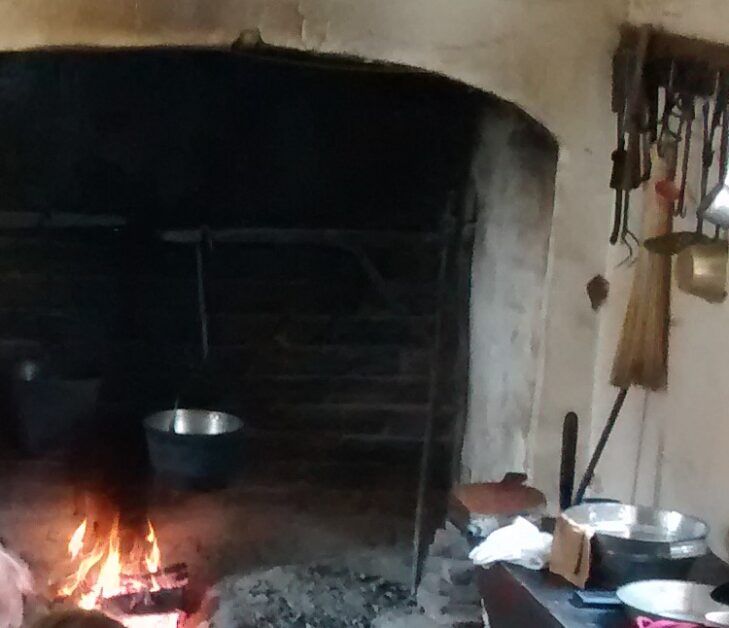
As for starting a fire, no matches, but also no flint and steel. Flint and steel looks good in the movies or written about in a book, but it is actually a pain to do, especially when it’s humid. The best option is to bank your fire carefully, which means to cover up the coals with ashes, and to do that before they burn out completely. That way, you just brush the ashes off, and have hot coals to start your fire the next day. (A big pile of coals properly banked will stay hot for several days.) And what is the first thing you put on the fire? Good question. The very first thing, after you make sure the fire has caught the wood, is to put a big pot of water on to heat. You’re going to need that for washing dishes, adding to cooking pots, all sorts of things. Generally, I want about 3-5 gallons of hot water available, depending on what kind of meal you are preparing (in summer, you might be fine with 3 gallons if you are doing less heavy cooking). And how do you get that water? Ah, the really fun part – go get it. Either from a well, or a creek or stream. I did sometimes have indoor water, but so did the 18th century town I was recreating. Most cooks would need to get water from some distance away, and carry it in wooden buckets. Two buckets full generally gets you 5 gallons at a time, and weigh about 50 pounds combined. You will usually need at least 10 gallons of water total, and I often got more over the course of cooking and washing dishes. (Don’t remind me about laundry days, then you’ll need between 40 and 50 gallons; yes, I have done laundry by hand!)
The next blog post will be about the actual cooking, but for this beginning, let’s look at a few things that the cook/housekeeper also would need to do that would involve a fire. Laundry was a 2-3 day job for most people. Two days if you don’t count the sorting, mending and soaking at the beginning. And those 2 days would need fire. The laundry itself would be boiled during the 18th century, and boiling a 30 gallon kettle of water takes several hours of a really hot fire. This was usually done outside, hopefully under shade if you’re lucky. Ironing was the second day, and for that task you have to set the irons in front of a hot fire to heat them. Depending on how much you need to iron, it can take anywhere from an hour to 2-3 hours. Since meals will also be needed those days, some planning needs to be done to make sure whatever is cooked can be done on the same fire if possible, or you have leftovers that don’t need heating (such as pre-baked dishes and fresh produce). The other big job that needs a fire is baking. If you’re English, a loaf or two every few days will need to be baked during regular cooking. Germans did batch baking, using one day to produce all the bread and many other baked goods needed for the week in a beehive oven (if you are smart, you plan laundry soon after baking). Both of these methods require additional fire and wood beyond what is needed for cooking. So next time you decide its just too hot this summer, think about having to work over a fire (and without air conditioning!).

